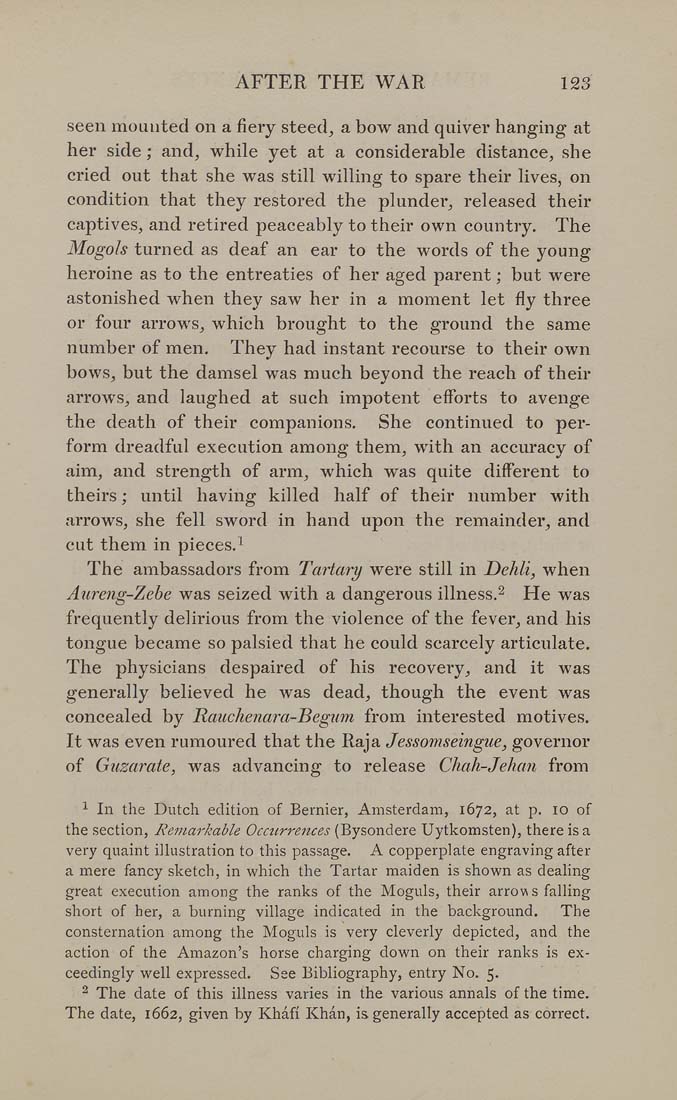AFTER THE WAR 123
seen mounted on a fiery steed, a bow and quiver hanging at
her side; and, while yet at a considerable distance, she
cried out that she was still willing to spare their lives, on
condition that they restored the plunder, released their
captives, and retired peaceably to their own country. The
Mogols turned as deaf an ear to the words of the young
heroine as to the entreaties of her aged parent; but were
astonished when they saw her in a moment let fly three
or four arrows, which brought to the ground the same
number of men. They had instant recourse to their own
bows, but the damsel was much beyond the reach of their
arrows, and laughed at such impotent efforts to avenge
the death of their companions. She continued to per¬
form dreadful execution among them, with an accuracy of
aim, and strength of arm, which was quite different to
theirs; until having killed half of their number with
arrows, she fell sword in hand upon the remainder, and
cut them in pieces.!
The ambassadors from Tartary were still in Dehli, when
Aureng-Zebe was seized with a dangerous illness.^ He was
frequently delirious from the violence of the fever, and his
tongue became so palsied that he could scarcely articulate.
The physicians despaired of his recovery, and it was
generally believed he was dead, though the event was
concealed by Rauchenara-Begum from interested motives.
It was even rumoured that the Raja Jessomseingue, governor
of Guzarate, was advancing to release Chah-Jehan from
! In the Dutch edition of Bernier, Amsterdam, 1672, at p. 10 of
the section. Remarkable Occtirrences (Bysondere Uytkomsten), there is a
very quaint illustration to this passage. A copperplate engraving after
a mere fancy sketch, in which the Tartar maiden is shown as deahng
great execution among the ranks of the Moguls, their arrow s falling
short of her, a burning village indicated in the background. The
consternation among the Moguls is very cleverly depicted, and the
action of the Amazon's horse charging down on their ranks is ex¬
ceedingly well expressed. See Bibliography, entry No. 5.
^ The date of this illness varies in the various annals of the time.
The date, 1662, given by Khafi Khan, is generally accepted as correct.
|








